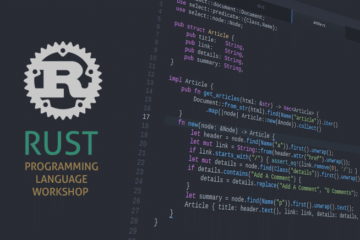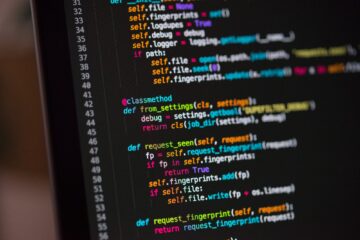Introduction
In the realm of data science, Python stands tall as a versatile tool set for handling complex datasets and extracting valuable insights. This guide dives straight into the core concepts and libraries essential for mastering Python for data science.
Python Essentials for Data Science
- Python’s simplicity and robustness make it an ideal language for data manipulation and analysis.
- Start by installing Anaconda, a comprehensive distribution that includes essential libraries like Pandas and Matplotlib, and fire up Jupyter Notebooks for an interactive coding experience.
jupyter notebook
Or try Jupyter Notebook in your browser.
# Example: Importing Pandas and reading a CSV file
import pandas as pd
# Load dataset
data = pd.read_csv('data.csv')
print(data)
data.csv
Name,Age,Gender,City
John,25,Male,New York
Emily,30,Female,Los Angeles
Michael,40,Male,Chicago
Jessica,35,Female,Houston
David,28,Male,Miami
Sophia,33,Female,San Francisco
Daniel,45,Male,Seattle
Olivia,27,Female,Boston
Matthew,38,Male,Dallas
Ava,29,Female,Atlanta
William,32,Male,Denver
Emma,31,Female,Philadelphia
James,36,Male,Phoenix
Isabella,26,Female,Detroit
Benjamin,39,Male,Minneapolis
Mia,34,Female,Portland
Ethan,37,Male,San Diego
Charlotte,41,Female,Washington D.C.
Alexander,24,Male,Austin
Abigail,42,Female,Orlando
Data Manipulation with Pandas
- Pandas is the Swiss Army knife of data manipulation in Python, offering powerful tools for slicing, dicing, and transforming datasets.
- Dive into Pandas with examples of filtering rows, creating new columns, and summarizing data.
# Example: Filtering data using Pandas
import pandas as pd
# Load dataset
data = pd.read_csv("data.csv")
# Filter based on Gender
filtered_data = data[data['Gender'] == 'Male']
print(filtered_data)
Visualizing Data with Matplotlib and Seaborn
- Matplotlib and Seaborn are indispensable for creating insightful visualizations from your data.
- Learn to craft compelling plots, histograms, and scatter plots to reveal patterns and relationships within your dataset.
# Example: Creating a scatter plot with Matplotlib
import matplotlib.pyplot as plt
# Load dataset
data = pd.read_csv('data.csv')
plt.scatter(data['Gender'], data['Location'])
plt.xlabel('Gender')
plt.ylabel('Location')
plt.title('Scatter Plot')
plt.show()
Building Predictive Models with scikit-learn
- Enter the realm of machine learning with scikit-learn, where you can build and train predictive models effortlessly.
- Explore classification and regression algorithms with examples ranging from decision trees to support vector machines.
import numpy as np
# Generate random data for features (X) and target (y)
np.random.seed(0)
X = np.random.rand(100, 2) # 100 samples, 2 features
y = np.random.randint(2, size=100) # Binary target variable (0 or 1)
# Display the first few rows of the dataset
print("Features (X):")
print(X[:5])
print("\nTarget (y):")
print(y[:5])
# Example: Building a decision tree classifier with scikit-learn
from sklearn.tree import DecisionTreeClassifier
from sklearn.model_selection import train_test_split
from sklearn.metrics import accuracy_score
# Split data into training and testing sets
X_train, X_test, y_train, y_test = train_test_split(X, y, test_size=0.2)
# Initialize and train the model
model = DecisionTreeClassifier()
model.fit(X_train, y_train)
# Make predictions
predictions = model.predict(X_test)
# Evaluate model accuracy
accuracy = accuracy_score(y_test, predictions)
print("Accuracy:", accuracy)
Conclusion
Python offers a robust ecosystem of libraries and tools that make it the ultimate choice for data science. By mastering Python essentials like Pandas, Matplotlib, and scikit-learn, you’ll be well-equipped to tackle any data analysis or modeling task with confidence. So dive into the code examples, explore your datasets, and let Python guide you on your data science journey!



0 Comments